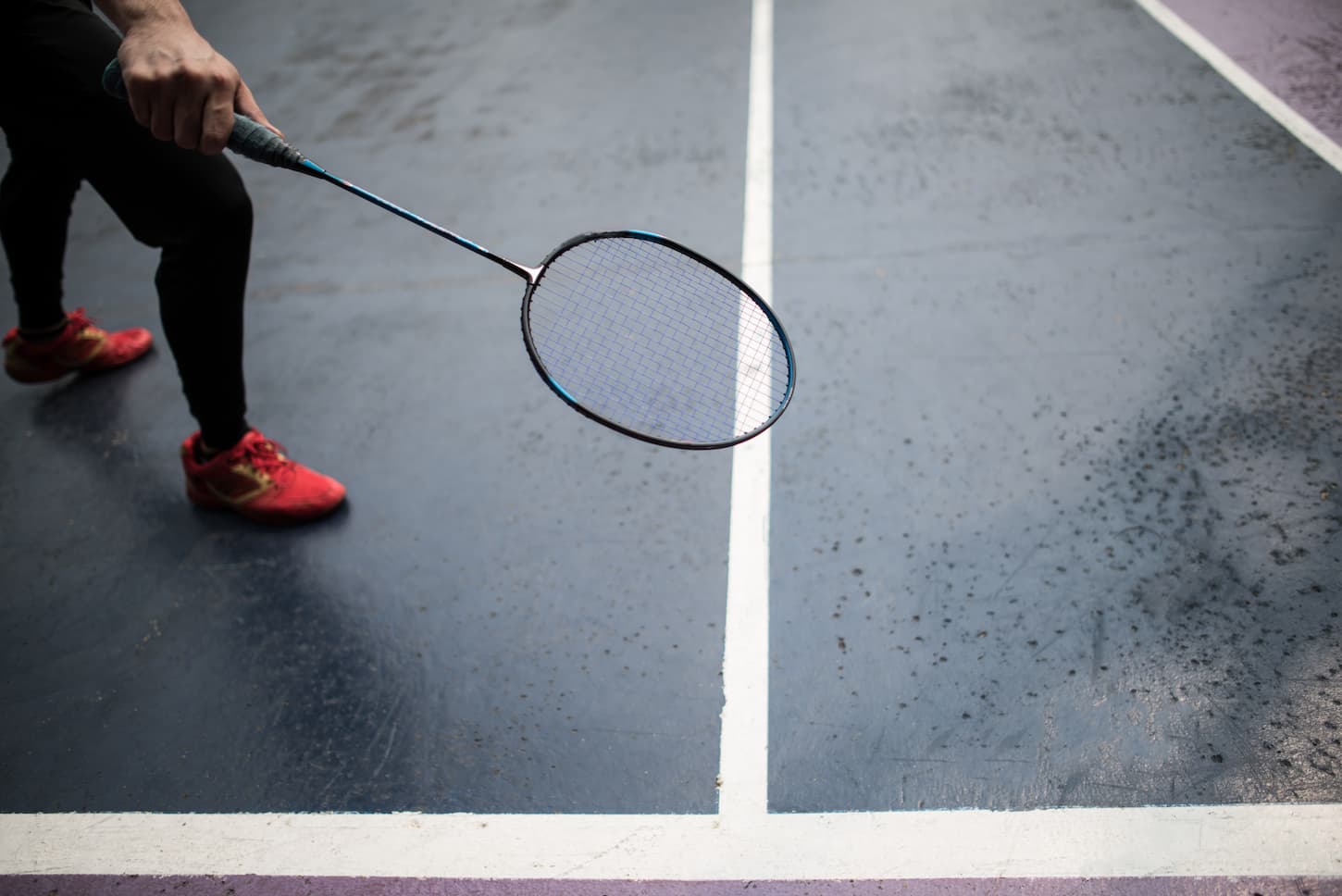Playing badminton is fun, isn’t it? Especially when you are playing with your family or friends. And even though you are not that good at it or you just want to try and play it, having to play with someone is still enjoyable, even though sometimes players still ask themselves: can a badminton racket cross the net?
A badminton racket can cross over the net onto the opponent’s side, but only as a follow-through of a stroke started on the attacker’s side of the net. It is a fault if the player starts the hit on the opposing side or if they hit the net.
Identifying faults in badminton can be confusing for some players of all levels but worry not! I am here to help you understand it more. Let’s do this.

Here is When a Badminton Racket Can Cross the Net Legally
Playing badminton has specific rules when it comes to crossing your racket over to the net. And there are times when you are legally allowed to cross it. This happens when you perform the Net Kill shot.
A net kill is a shot in badminton wherein the player hits the shuttlecock at the net area downwards. Or in other words, a net kill is when the shuttlecock is hit really close to the net. And in this case, crossing your racket over the net is important for this shot.
While performing a kill in badminton, there is a possibility that the player may hit the shuttlecock before it reaches their side, and by doing this shot, there is also a higher possibility that the player may hit the net accidentally.
In addition to those, here is a quick reminder for you, a net kill is not the same as a badminton smash. And just like what I have mentioned previously, you can only cross your racket over the net but only as a continuation of a shot that you have hit on your court’s side.
When a Racket Crossing the Net Results in a Fault
Aside from what I have said about the racket can cross over the net but only as a continuation, all other situations are considered a fault when you cross your racket over to the side of the net. There are three main situations wherein those usually happen:
Fault #1: You accidentally hit the shuttlecock on the opponent’s side of the net
It will automatically be considered as a fault when you hit the shuttlecock, not on your side, but on the opponent’s side of the net, even if it was just an accident. This means to say that when the badminton rally is still ongoing, you are only allowed to hit the shuttlecock when it already crosses over to your side.
Fault #2: Crossing the net with your racket intentionally
It will also be considered a fault when you simply cross the net even though you have not yet hit the shuttlecock on your side of the court first before it crosses over the net.
Fault #3: You block a legal returning shot from your opponent
From the Laws of Badminton, point 13.4.4, it is mentioned that it will automatically be considered a fault if you block or prevent your opponent from returning a legal shot, wherein the shuttlecock is hit by crossing over the net.
Fault #4: The player touches the net
It’s a fault whenever a player touches the net, or its support parts, with their rackets, bodies, or clothes.
So be extra careful with your strokes and movement when around the net. Touching any part of the net will result in an instant foul, and the point will go to the opponent.
How to Avoid Other Common Faults in Badminton
Learning how to avoid other common faults while playing badminton is an upper hand for you! Here are some tips on how you can prevent these common faults:
Being too close to the net while performing a Net Kill shot is really not the best idea there is. Crossing your racket over the net is not the primary risk here; instead, it is the continuation of the stroke when you are going to hit the net with your racket.
It is recommended that you use the Net Swipe instead of the net kill at any moment when you are too close to the net. A Net Swipe is easy to understand for the reason that it has a similar motion to a windshield wiper. This means to say that hitting or crossing the net has a low chance of happening.
If, for instance, you want to use the Net Kill shot as much as possible, try to lessen the follow-through movement. You can do this by using your wrist and fingers only and not your whole arm when performing the net kill.

Key Takeaways and Next Steps
Learning how to play badminton is really fun and exciting, especially when playing with friends. Also, it is better to know what faults there are so that you can avoid executing them. And in addition to that, you can benefit from those, especially when playing in an actual match.
With these guides, I hope you have learned so much from this. Stay safe, and always remember to play safe!
Oh, but before you go – make sure you read this article next so that your badminton game is always improving: Playing Badminton: Rules, Instructions, and What’s In-Bounds.
Resources
Learning from your own experiences is important, but learning from others is also smart. These are the sources used in this article and our research to be more informed as a family of sports nuts wannabes.
When learning about how to play badminton, it is best to learn from a wide variety of reputable sources. These are the sources used in this article and in our own research to be more informed as a sports player.
- “Can a Badminton Racket Cross the Net?” The Badminton Guide, https://thebadmintonguide.com/can-a-badminton-racket-cross-the-net/.
- “When You Play Badminton, is it Right to Cross Your Racket Over the Net to Hit the Shuttlecock?” Dave Zarco, 14 June 2020, Quora, https://www.quora.com/When-you-play-badminton-is-it-right-to-cross-your-racket-over-the-net-to-hit-the-shuttlecock.
- “Badminton Rules: Can the Racket Cross Over the Net During Play?” Master Badminton, https://www.masterbadminton.com/badminton-rules-can-the-racket-cross-over-the-net-during-play.html#:~:text=Yes%20you%20have%20to%20wait,before%20you%20can%20hit%20it.&text=This%20means%20that%20you%20cannot,it%20will%20be%20a%20fault.
- “Faults” The Badminton Bible, https://www.badmintonbible.com/rules/faults#:~:text=You%20are%20not%20allowed%20to,during%20your%20follow%2Dthrough%20action.
